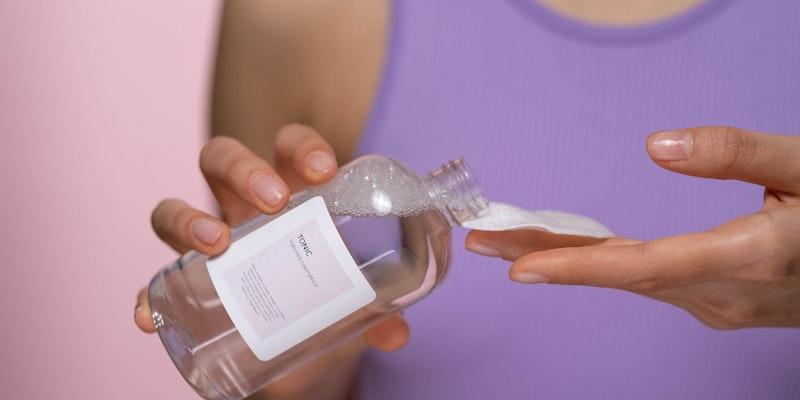Yeast Infections Decoded: What You Need to Know
Oct 01, 2023
A yeast infection in the vaginal area, also called vaginal candidiasis, is a fungal illness that affects women. Fungus like candida causes this infection, mainly Candida albicans, which grows too much. Most of the time, the vagina has bacteria and yeast in a good balance. But if this balance shakens, it will cause illness because of the outgrowth of yeast.
Yeast infections in the vaginal area often cause itching, burning, odd discharge (that looks like cottage cheese), and pain when urinating or getting sexually intimate. If you use antibiotics, there is a risk factor of contracting infection if your hormones change (like when you're pregnant), if your immune system is weak, if your diabetes isn't under control, or if you use specific birth control methods.
Understanding what causes a vaginal yeast infection and its signs is essential for getting the proper medical care and taking care of this common condition.
Symptoms of Vaginal Yeast Infection
Mild to moderate symptoms of vaginal yeast infection include:
- Vaginal and vulvar itching and irritation
- Experiencing pain or discomfort, typically during sexual activity or urination
- Vulvar inflammation and redness
- Aching and tenderness in the genitals
- Uterine rash
- Thick discharge from the vagina.
- White and odorless discharge from the vagina
- Continual vaginal bleeding
However, the symptoms vary in every woman. Yet, a common condition causes redness and hard skin around the vagina because of severe infection.
Causes of Infection

When the natural yeast in your vagina multiplies uncontrollably, you get a vaginal yeast infection, aka vulvovaginal candidiasis. It causes itching and other annoying symptoms in many people. In the medical world, candida yeast is typically responsible for triggering such infections.
The vaginal yeast that is usually present can cause an infection if a change in vaginal chemistry stimulates its growth. Yeast outgrows in the vagina because of the following reasons:
- The use of antibiotics, which disrupts the delicate equilibrium of the vaginal microbiome
- Pregnancy
- Poor glucose management
- Immune dysfunction
- Using estrogen-increasing methods of birth control or hormone replacement treatment
Yeast infections are often caused by the fungus Candida albicans, and these infections are typically more challenging to treat and require more severe medications.
Medical Causes
Yeast infections are more common in people with specific health issues. These medical conditions include
- The use of certain drugs, such as steroids
- The presence of HIV
- The presence of diabetes
- The presence of stress
- A lack of sleep.
Diagnosis of Yeast Infection
Self-diagnosing a yeast infection can be challenging since symptoms are similar to several other disorders, including bacterial vaginosis, trichomoniasis, and dermatitis (irritated skin). Only 34% of women correctly identified their condition as a yeast infection.
In particular, you should visit a doctor if this yeast infection is for the first time. If you have a recurrent yeast infection and the treatments you used before aren't helping, it is also a sign you need to visit your doctor.
Every infection might show different signs. Unlike prior yeast infections, your symptoms might be unique. Your doctor will question you about your symptoms and medical history, check your pelvic region, and will examine the test of your vaginal discharge to diagnose a yeast infection. A lab technician will analyze the release to check for an overgrowth of candida.
Since some women have candida in their vagina without any symptoms, your doctor will determine a diagnosis based on the totality of the evidence, not just a positive fungus. A bacterium culture is the gold standard, but a microscopic examination of a discharge sample might also help some doctors reach a diagnosis.
Treatments You Can Opt

Antifungal medication can heal yeast infections in days. Monistat and other yeast infection creams and suppositories may be bought at a drugstore without a prescription.
Even if your symptoms disappear, follow the guidelines and finish the course. Medications (Diflucan or Fluconazole) can cure yeast infections. Your doctor must prescribe the yeast infection medicine.
Don't have vaginal or oral sex or put anything in your vagina until treatment and infection are gone. Sex friction can irritate or slow healing. Some vaginal treatments contain oil, which might damage condoms.
Avoid scratching yeast infections, even when they're itchy. It can irritate or injure your skin, spreading bacteria and illness. Over-the-counter vulva creams can relieve inflammation. Burning and itching relief tips are available from your doctor.
Consult your doctor if symptoms last more than a week after vaginal yeast infection treatments. You may need further therapy, or something else is irritating you.
Prevention
Wearing underwear with a cotton crotch and a loose fit can help prevent vaginal yeast infections. It might be beneficial to avoid legwear consisting of tights.
Moreover, when you exercise, you eliminate some vaginal germs that usually prevent infections.
You should try not to use these everyday useable products to avoid infection:
- Bubble bath
- Sanitary napkins
- Tampons with a floral scent
- Spas, saunas
- Hot showers
- Excessive use of antibiotics, especially for viral illnesses like the common cold
- Spending a long time in wet clothes.
Risk Factors
Some things that might make you more susceptible to yeast infections are:
Taking antibiotics
Women who take antibiotics are most likely to get yeast infections.
Usage of broad-spectrum antibiotics
Overgrowth of yeast can occur after using broad-spectrum antibiotics because they eliminate harmful and beneficial bacteria in the vagina.
Rise in estrogen level
There has been a rise in estrogen. Women with elevated estrogen levels, such as those pregnant or on high doses of estrogen birth control pills or undergoing estrogen hormone therapy, are more likely to get a yeast infection.
Diabetic control issues
Women with poorly managed blood sugar are more likely to get yeast infections than those with consistently maintained sugar levels.
Immune system dysfunction
Yeast infections are more common in women with compromised immune systems, such as those who have taken corticosteroids or HIV.
Reasons to Visit the Doctor
Schedule a visit to the doctor if:
- You've never had yeast infection symptoms before.
- You are confused if you have an infection or not.
- When vaginal creams are unable to help with symptoms.
- You start experiencing new symptoms.





